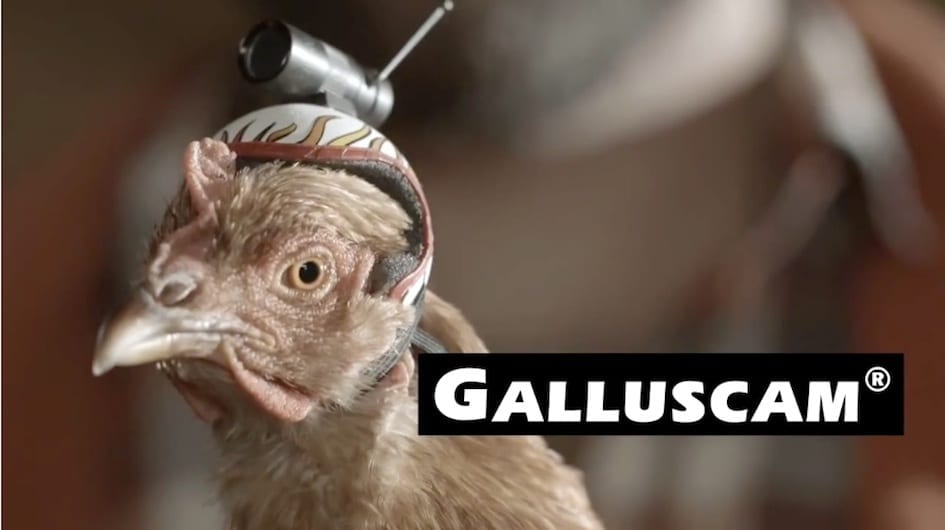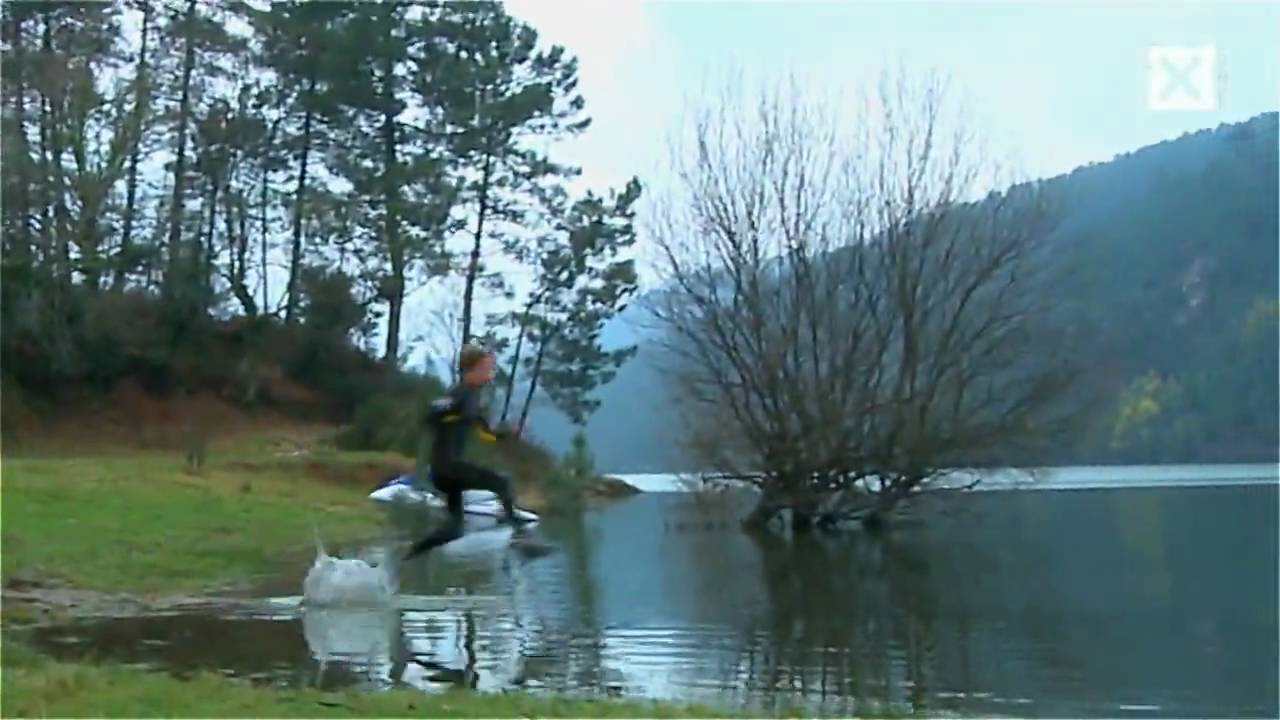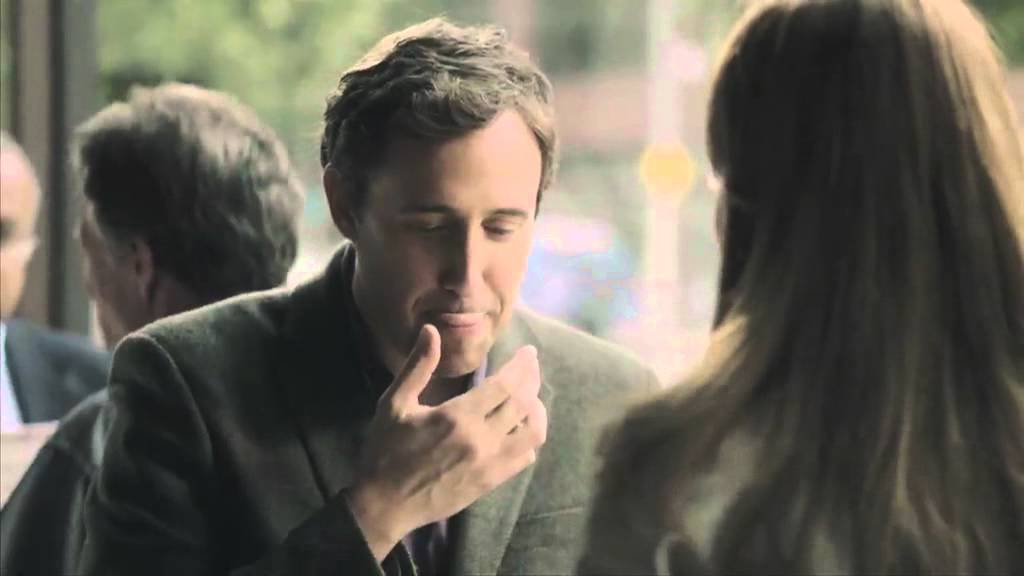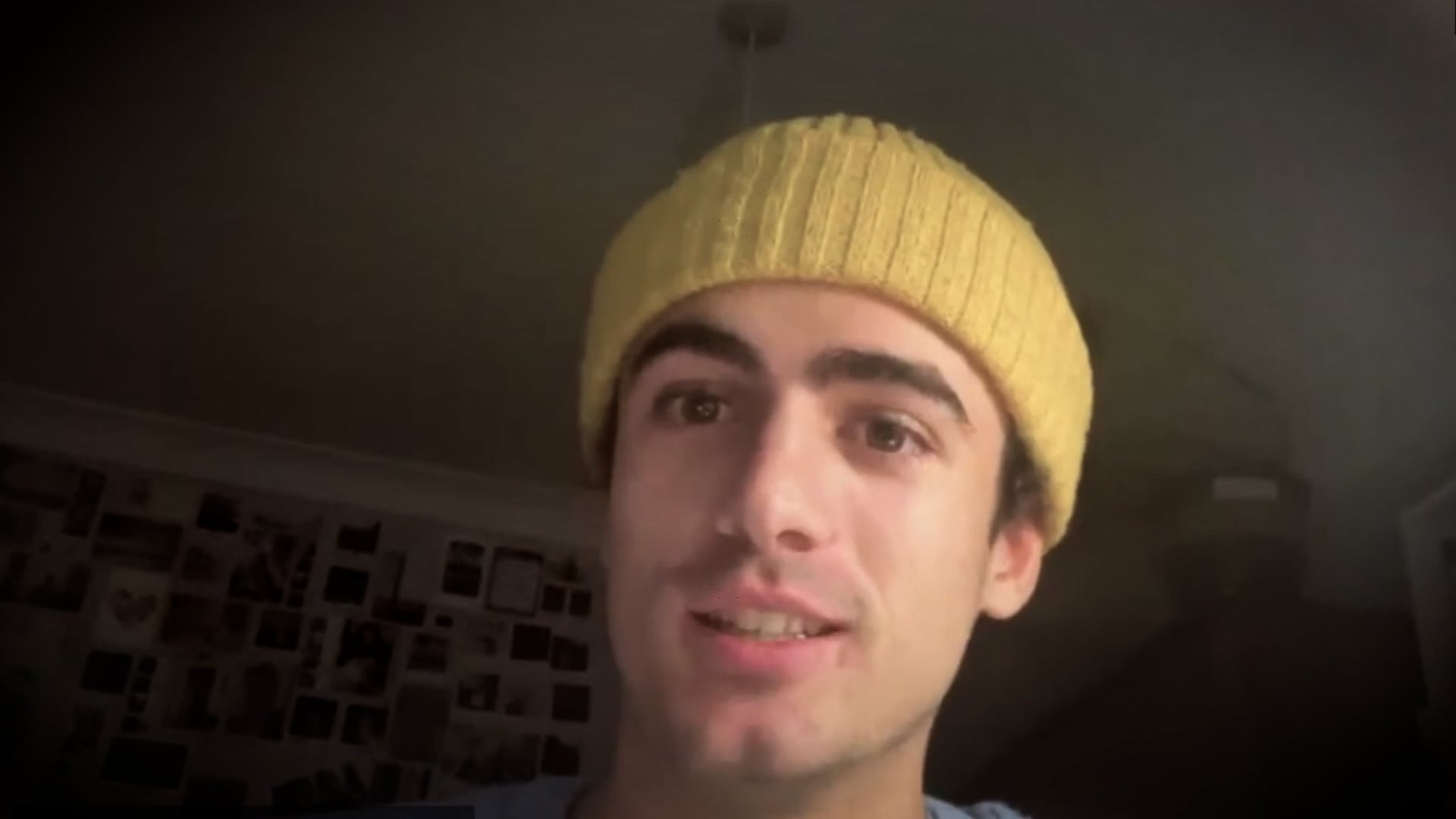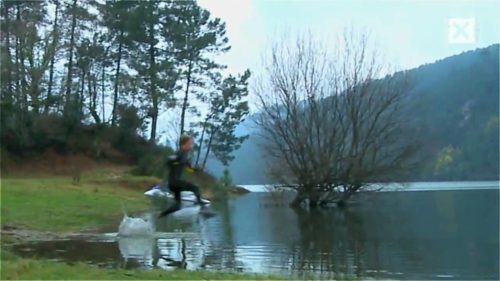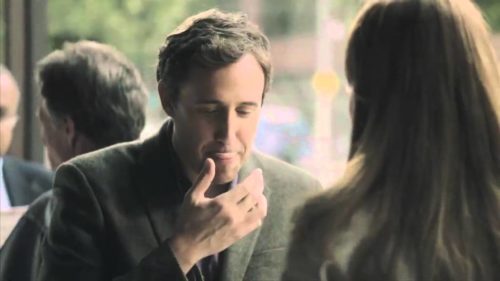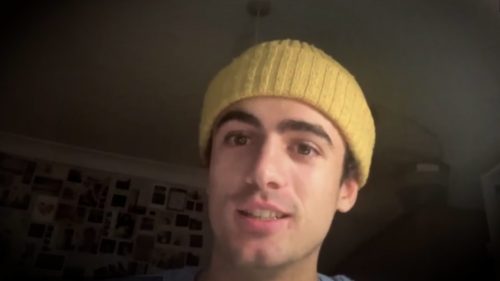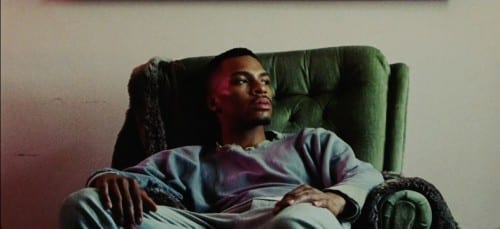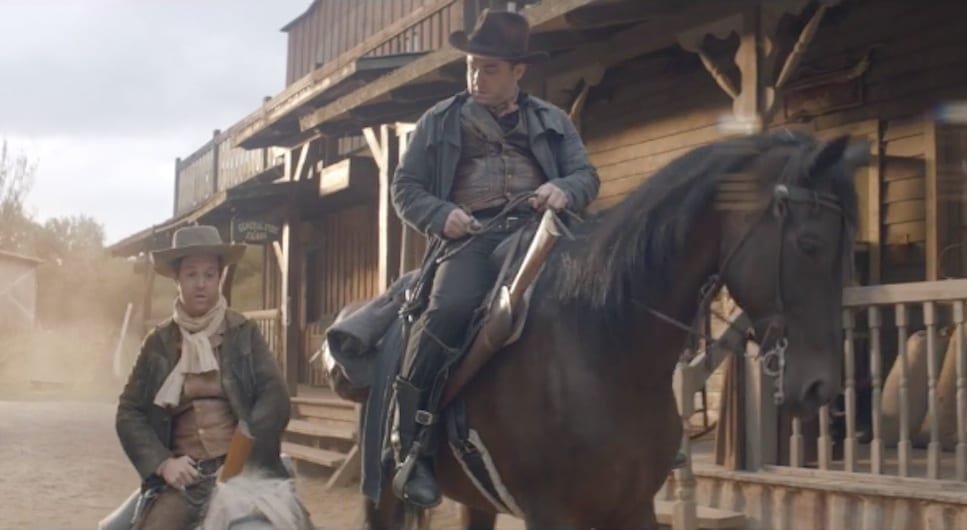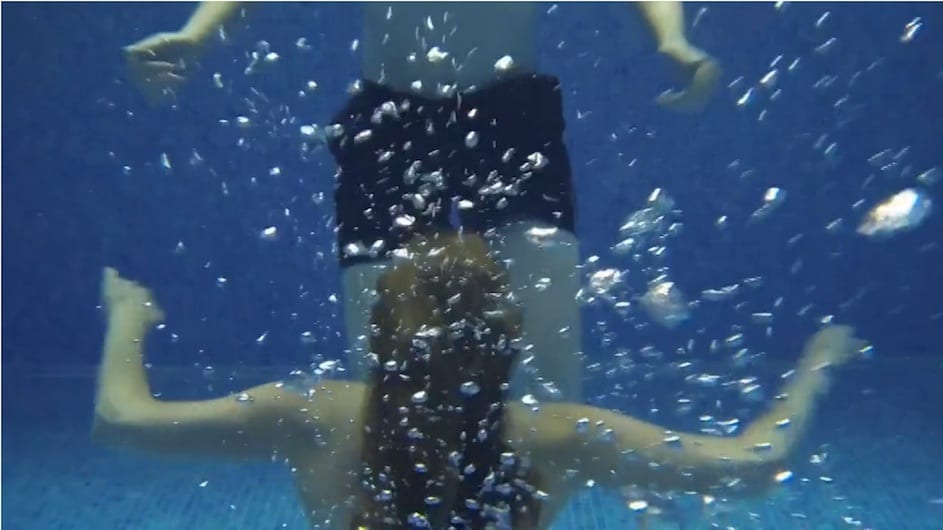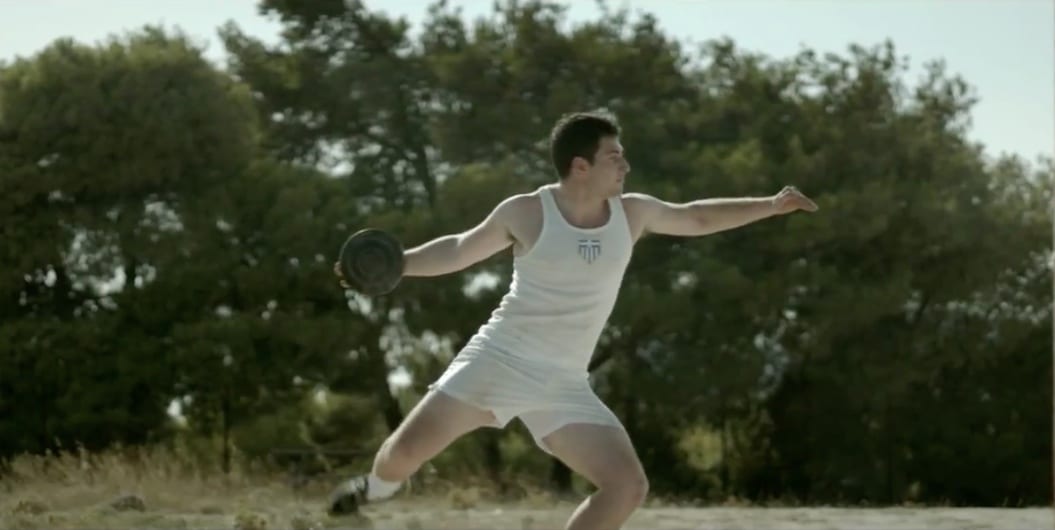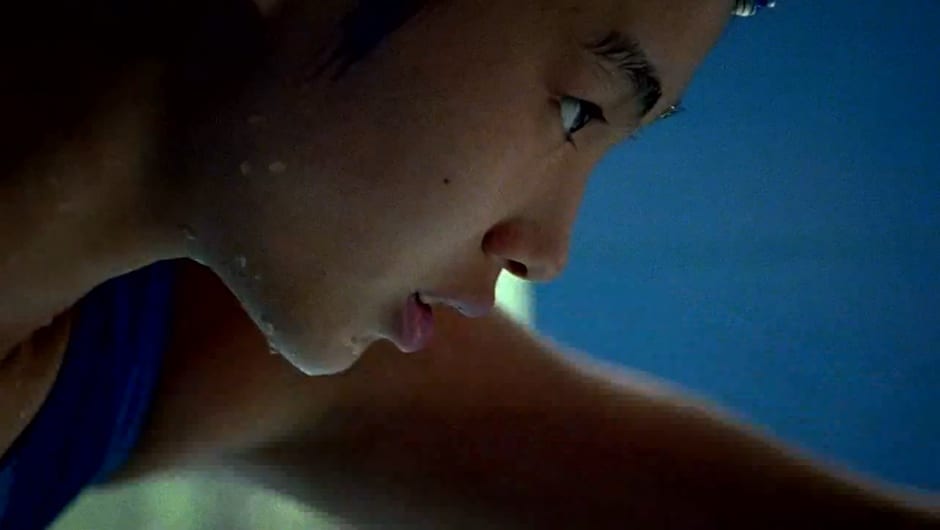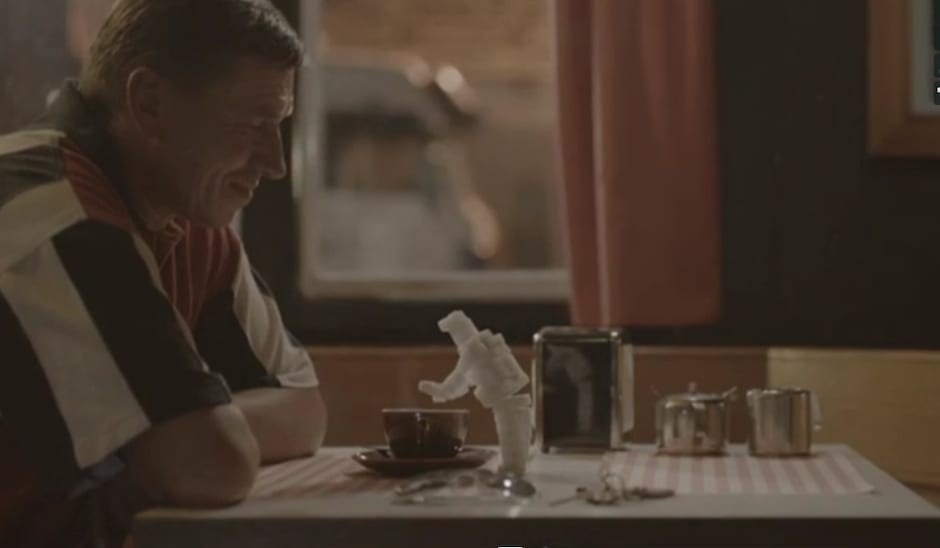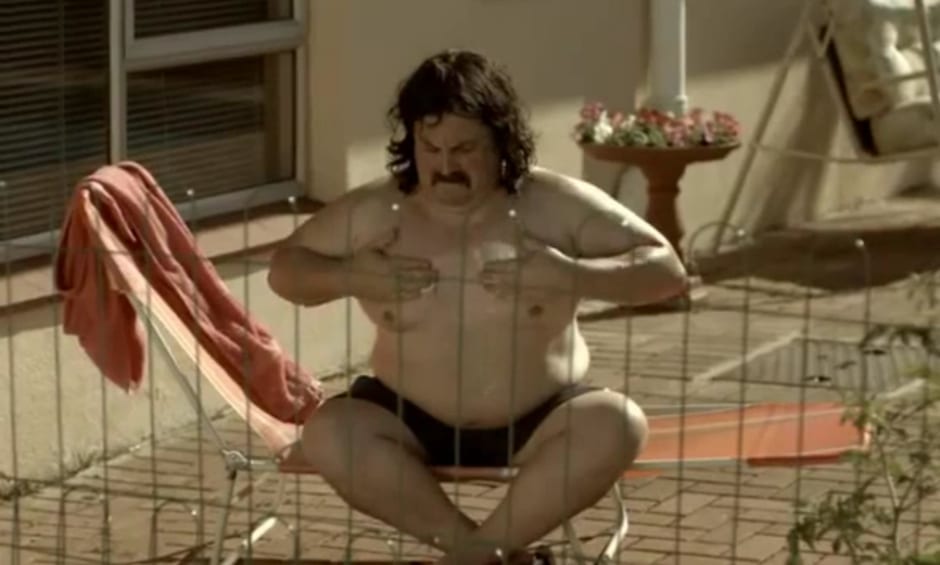Love your deadpan work, although I can imagine you work it all out deadly seriously and there’s a lot of pre-prod? How do you go about drawing up your treatments?
I usually just sit down and think about it for some time. I first want to understand the concept, the core of the idea. Then work my view on it from the ground up. After that I go look for ways to put it into a shape that best fits the concept. This is the reason why my reel tends to be quite broad in filming styles. In some cases the character is the most important, in others the visuals becomes just as important.
Treatments are a sketchy thing. You have to somehow figure out which tone of voice will work best for this particular creative team and client (who you haven’t even meet!). It always feels a bit like a gamble. I know what I want to make, but there are just so more ways of writing it down.
And then do you storyboard in detail or do you simply draw up a shots list? We only ask because most of your work has a very spontaneous feel to it that would be difficult to pre-empt.
That’s right, the spontaneity usually comes from shooting with a very open mind. I try to stay away from storyboards on films we want to achieve a real feeling (like in Hi Tec). The problem with a shooting board in general can be that people forget to be open to new ideas emerging from the process. You don’t want to stop searching for ‘something even better’ till you touch the piece for the very last time. Having said that, some shoots can get really complex in the blocking, in those cases a shooting board can be very helpful to communicate clearly to the crew.
Please tell us about the wonderfully surreal LG Steady Chicken. What was the original brief on that and how did you develop it?
The original brief was based on the techy guy who we see giving the demonstration on youtube. The agency built on that and came up with the idea to show someone actually using the chicken as a steadycam. I felt it would be great to make this guy an extreme sports cameraman, an Australian extreme sports cameraman that is…
The joke for me was always in the… well, animal abuse. I wanted that ‘you can’t do that with a chicken!’ response. In order to avoid negative reactions I made the guy really love his chicken to death, calling her by her name all the time etc. This creates a funny contrast. On top of that I made the visual effects in the close-ups deliberately a bit ‘Bollywood-ish’, so that you would feel it’s not real. It allows you to laugh, even if you’re an animal lover (which I am). I assure you, the chicken had the time of her life, she didn’t want to get out of the warm lamps or step of the motorbike after the takes.
What was the most challenging aspect of the production and how did you resolve that?
The budget wasn’t built on the treatment I had written at all. Jumping out of a plane? A canoe flying off a cliff? Only after explaining I wanted to do it all with stock and postproduction did I manage to convince everyone it would be possible (including my own producer, who kicked ass by the way).
We did a massive research to find all the action shots and then starting thinking about how to get the chicken crafted in. It’s mostly compositing really. The agency (Superheroes, Amsterdam) was on our side all the way, no compromises just working together for the best result. They did a great job selling the edit to the client LG; when they saw the first cut, they came back with 25 pages of (pretty weird) changes that we didn’t have to do in the end.
And of course Liquid Mountaineering, Walk on Water is a classic with over 13 million viewers. So we know now that there was a barely submerged platform – genius – but please tell us how the idea and production evolved.
This idea came from two guys called Hugo and Philip (former CCCP, Wieden&Kennedy, now: This, that and the Other). I knew them from before and we sat down together before there was a script. We developed it together every step of the way, which was great.
I felt that in order to make it believable, we needed believable characters. So we looked a lot at extreme sport films and the personalities in them. They all seemed to have in common to be very passionate and focused, but also to have a great sense of self entitlement, (they’re not very modest usually).
The intention was to mock these sort of characters a bit with this film as well as use their style to add credibility. Even though we wanted to give you a strong sense of realism, we didn’t expect people to actually believe it. But it turned out that many did and people even started trying it. Mythbusters ended up doing a full episode on it and of course debunked it.
We just started working on something new for Hi Tec…
The irony about Bijenkorf is that it’s a seriously shot film with the twist coming with the pack shot at the end. What’s your method for directing actors – do you always get them to play it straight? Do you rehearse lots prior to shooting? And where do you find your cast? The actor in Steady Chicken sounds Aussie.
My way of directing actors depends on the film and the quality of the actor. In the case of trained actors I just explain the story to them and give them motivations, goals or thoughts, rather than a ‘play sad’. Real performance comes from real emotions and there’s ways of getting there as an actor. Playing ‘at it’ isn’t one of them.
I usually don’t get the chance to rehearse, but with Hi Tec I had the actors flying in one day before. At arrival I asked them to no longer talk about ‘running over water’ as an impossibility, but whenever the subject would come up, they would have to talk about it as if they we’re really capable of doing it. Over the course of the evening and the morning I kept on feeding them the lines from the script in our conversations. Once we put them in front of the camera, it just starting flowing out of them.
Where are you based? Have you been signed to Czar for long?
I’m based in London. I’ve been with Czar for about five years.
